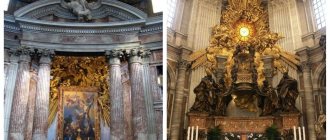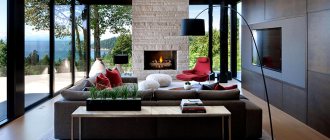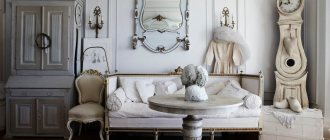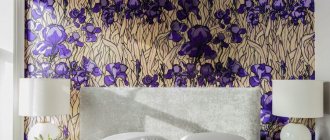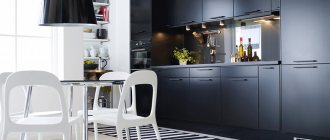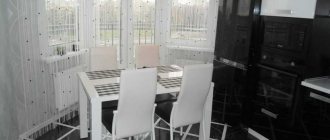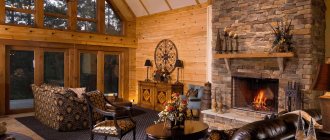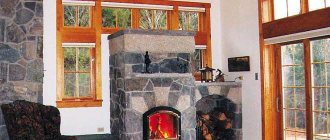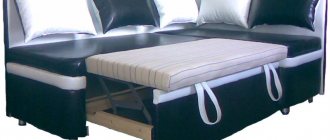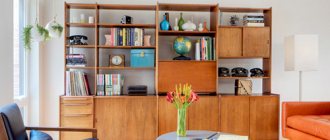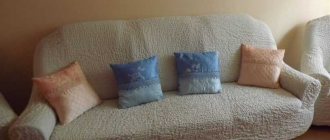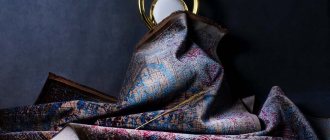SHARE ON SOCIAL NETWORKS
FacebookTwitterOkGoogle+PinterestVk
Gypsum stucco is always in fashion, and its use in decoration will make the interior unique and inimitable. Even in small quantities, if it is skillfully made and correctly applied, such decor will become an exquisite addition and will favorably emphasize the dignity of the room. In addition, stucco molding will help visually adjust the space and hide various irregularities on the surface of the ceiling and walls.
Gypsum stucco molding is always relevant and suits different styles
Plaster decor: positive and negative characteristics
The use of plaster molding as a finishing material in a house or apartment will add originality, elegance and luxury to the decor. Stucco molding will allow you to create unusual visual effects such as voluminous recesses in the walls or an endless length of the ceiling. If there are errors in the finishing, it will close the joints and cracks, complement the connection lines of various surfaces and materials, and hide technological equipment and communications: pipes, electrical wiring, ventilation holes.
Plaster decor can make any room elegant and impressive
Also, the positive qualities of gypsum decor should be noted:
- clear relief and ideal edges;
- environmental safety;
- fire resistance;
- resistance to temperature changes;
- hygroscopicity;
- long service life;
- maintainability;
- ease of processing and coloring.
A gypsum product does not burn, does not crack from heat and cold, freely absorbs and releases moisture, lasts for centuries, and is easily restored in case of damage. Considering these qualities, you can also safely use gypsum stucco decoration for finishing not only indoors, but also on the surface of facades.
There are not as many disadvantages as advantages, but you need to know them:
- vulnerability to mechanical damage;
- difficulty in installation;
- hygroscopicity;
- high price.
Gypsum is fireproof, environmentally friendly and has a long service life
Gypsum is not a construction material, but a finishing one, so its strength is not comparable to the strength of brick, concrete or mortar. Products made from gypsum are more vulnerable to damage. However, being decorative elements, they are not intended for high loads. At the same time, installation, due to the considerable weight of the finished elements, is sometimes difficult, especially when installed on the ceiling. This work requires certain skills and equipment.
Hygroscopicity is one of the important positive characteristics of gypsum products; at the same time, it can also be a disadvantage (conditional). Gypsum cannot be used in rooms with excessive humidity without the use of hydrophobization - coating with a moisture-proof composition. High cost, as a disadvantage, is also a conditional factor. By showing imagination and creativity, it is quite possible to make small molded parts from plaster with your own hands.
Art Deco
Art Deco is the option when a combination of something completely incompatible at first glance is acceptable. Creative execution can include all possible chic items.
It is not necessary to adhere to any single type of plaster elements; you can combine classic designs on vases and niches with modern figurines.
Typically, this style is preferred by people with an active lifestyle who value comfort and luxury in one set.
Types of gypsum products and their purpose in the interior
The history of the creation of gypsum stucco goes back to the times of Rome and Ancient Greece. This type of decor is rightfully considered one of the oldest, having been used in various eras throughout history. A complete picture of stucco can be obtained by using it as a constructor, connecting various parts and elements. It should be noted that the seamless connection is one of the key positive aspects.
There are many types of gypsum products that are used in interior decoration.
What can be made from plaster? The main elements of stucco decoration are:
- ceiling cornice - used to cover and decorate the junction of walls and ceiling;
- molding - a decorative insert for bridging gaps or separating finishing materials;
- socket - masks the hole itself, mounting fasteners, place of supply and connection of electrical wiring;
- bas-relief - a convex image protruding slightly above the background plane;
- bracket - an element for attaching whole objects or parts thereof to walls and columns;
- column - a detail of architectural decor that can also support the ceiling;
- niche is a recess of various shapes in the wall that serves as a decorative element or a place to place a shelf, bookcase or cabinet.
Modern stucco has more advanced characteristics, and the process of its creation has little in common with the process of sculpting by ancient architects. However, the splendor and overall visual effect are no less naturalistic. You can increase the uniqueness of decorative products by making them from gypsum yourself. To do this, you just need to purchase special molds and dry gypsum mixture. How to make a mold for plaster with your own hands in a home workshop will be discussed later in the article.
Helpful advice! The production and installation of gypsum elements is best done using special technology, and not the advice of friends and acquaintances. This will guarantee that the product will not collapse after some time.
Gypsum columns can be used both for decoration and to support something
Depending on the complexity of the decorative element, various technologies can be used: casting with broaching or pouring into a mold, modeling. All these methods can be mastered and successfully applied both at home and for business purposes. So, let's look at what you can make from plaster with your own hands, using various methods of sculpting decorative elements.
Manufacturing technology of smooth-drawn gypsum cornices
Most often, to create original forms of gypsum ceiling cornices, the broach casting method is used, which is also suitable for mass production. The main difference between this method and classical mold casting is surface profiling using a movable metal template.
It is convenient to make the template from sheet iron (tin). Using metal scissors and other auxiliary tools, a hole is cut in the shape of the profile of the future cornice. Using sanding materials, the profile cut is brought to its final working condition. The finished template is fixed in wooden equipment, which can move along guides.
As a rule, the broach casting method is used to make gypsum ceiling cornice.
The working surface is lubricated with a compound that facilitates easy sliding of the template and allows you to remove the finished product without effort. The lubricant composition is usually based on a mixture of stearin and kerosene, but in their absence it is also possible to use machine or vegetable oil. The gypsum solution is applied to the working surface in the direction of movement of the template. The composition is selected experimentally. In practice, to obtain a liquid gypsum solution, 1 kg of gypsum is added to 1 liter of water, for medium thickness – 1.5 kg, and for thick – 2 kg.
Then, the template is slowly and smoothly moved over the gypsum solution that has been laid and thickened to the consistency of sour cream to obtain the profile of the future product. This is repeated several times until a complete profile of the gypsum cornice is obtained. After hardening, the gypsum solution will increase slightly in volume. Therefore, it is necessary to additionally perform a pre-final broach to cut off the excess. The final stretch with a small amount of liquid solution will finally form a perfectly smooth and even surface.
The same technology can be used to produce molding. This insert can be used in combination with a cornice or instead of it. As a rule, it is installed before finishing, and not after it.
Technology and materials for the manufacture of gypsum rosettes
Gypsum rosettes as decorative elements for the ceiling hole in the place where the central chandelier hangs look harmonious in various styles and can be used to decorate side lighting. In this case, the mold casting method is used. The manufacturing technology consists of several stages.
Most often, gypsum rosettes are used to decorate holes for placing a chandelier.
The first step is to make a model from available material: cement mortar, clay, wood, plasticine, stone, etc. A finished factory product can also serve as a model. Then a cast (mold) is taken from it - a kind of “negative” of the future product. Using this mold, the required number of plaster castings is made.
The common basis for the manufacture of all types of products is high-strength, finely ground gypsum, for example, GVVS-16. Like any other material, gypsum has its own characteristics - rapid setting with slight heating and increase in volume. To enhance the strength of castings, aqueous emulsions of synthetic resins and other materials can be added to the gypsum “dough”.
Helpful advice! The gypsum solution must be used immediately after preparation, since it retains fluidity for only 2-3 minutes, and plasticity for 6-8 minutes. To slow down setting, you can use hide glue or vinegar as an additive. The astringent properties of set gypsum mortar cannot be restored with water.
The rosette consists of two parts - the base and decorative elements on its surface. Therefore, it is possible to use both the pure casting method and the combination of casting and broaching, which we discussed above. You can also use a broach to create only the basis for a model of the future product, and if desired, the entire rosette is cast into a plaster mold.
To make a ceiling rosette, the casting and broaching method is used.
First of all, to create a base, the working surface, as in the case of broach casting, is coated with a lubricant. Then a radius ruler with a driven nail is attached to the center on the axis, through which the outline of the future product is applied. After this, the working surface is covered with gypsum mortar and a template with the profile of the base for the socket is put on the central axis. The technology is similar to the previous one, however, the profile moves not longitudinally, but around the circumference. The technique is completely repeated.
After making the base of the rosette, you need to make and attach decorative elements to it. Their diversity can only be limited by imagination and a sense of proportion. For them, the method of casting into a mold for stucco molding is used. To make a template, you do not need highly professional equipment - an amateur home workshop is quite enough.
Briefly about the history of the appearance of stucco decorations
We can safely say that the history of relief designs used to decorate the walls of a home began at the dawn of human civilization. Over time, architectural art arose in which three-dimensional elements were actively used to decorate walls and ceilings. Ancient palaces and temples have still been preserved, the facade and interior walls of which are decorated with numerous stylized plant-themed ornaments, as well as scenes from ancient history and mythology.
The exact time of the appearance of the first stucco decorations is unknown, but the beginning of the modern art of stucco decoration was laid by ancient Egyptian architects and artists. At first, reliefs were carved in stone, but this was a long process, so ceramic decor appeared, made from clay, which was then fired.
The ancient Egyptian stucco decorations of palaces and temples, preserved over the past millennia, still amaze with their sophistication
Somewhat later, the same Egyptian craftsmen discovered that it was easier to make relief jewelry from alabaster powder obtained from gypsum stone, which hardens very quickly when mixed with water. Therefore, having prepared the mixture, they began to pour it into stone molds, which made it possible to significantly speed up the process.
However, stucco art reached its peak in the era of antiquity. It was during this period that the foundations of the technology and aesthetic trends of relief decoration were formed in Ancient Greece and Ancient Rome.
Stucco molding is an integral part of ancient architectural art
This trend truly received a “rebirth” in Europe during the Renaissance, when ancient motifs began to dominate art and architecture again. They remain classics to this day and are used in a variety of styles.
Different eras and emerging styles introduced their own motifs into the art of stucco. In their own way, they manifested themselves in “Gothic”, “Renaissance”, “Baroque”, “Rococo”, “Classicism”, “Modern”, “Empire” and other directions.
The history of decorative stucco in Russia is about three hundred years old - such decorations quickly became fashionable during the period of Europeanization begun by Peter I. It is difficult to even find a city building built in the 18th-19th centuries, the architecture of which did not use stucco decorations.
It must be admitted that to the eyes of a modern person such an oversaturation of stucco molding is incomprehensible and looks like an obvious excess.
In the last century, the use of stucco began to decline - other styles of home decoration came to replace it. But, although pragmatism is gradually replacing “pretentiousness,” stucco molding is still used to this day for exclusive interior decorations. Many owners of houses and apartments are looking for opportunities to decorate their premises with similar elements.
Why not? The main thing is that it should be in moderation and not look kitsch.
What and how to make a plaster mold for casting
To create a form, you need a template or an original product. What is noteworthy is that all technologies for working with gypsum can be interconnected to create any decorative element. For example, models of decorative elements of a rosette and other types of stucco molding can be made using the molding method.
To create a plaster mold you will need a template or an original product.
When creating a mold for stucco molding from gypsum, used for decorative elements that will then be attached to the base, using hard cardboard as a flask is quite sufficient. To cast the entire socket, it is better to use multilayer plywood, which will not be damaged by a large mass of gypsum. To fasten the walls when working with cardboard, it is convenient to use tape, but for plywood you will need nails and screws. The gaps between the walls are coated with plasticine. The flask can consist of either one part or two halves, depending on the volume of the required product.
The model is coated with a lubricant and placed in the center of the flask on thin plastic supports or thread stretchers. The gypsum solution is applied with a brush to difficult areas (lines and depressions) and poured to the level of the intended joint of the halves of the flask. After thickening, you need to check how well the model separates from the lower half. Then its surface and upper part are covered with a lubricant, and the upper half of the mold is poured.
Helpful advice! Since making the model, preparing the mold, the casting process and the operations of processing plaster figures with your own hands are associated with the appearance of a large amount of dust, ventilation must be provided, and high-quality cleaning of the room is also necessary. You should not do this in residential areas. The use of open flames should also be avoided due to the explosive nature of the mixture of air and dust in a certain concentration.
In order for the stucco molding to turn out neat, it is necessary to clean the mold before pouring each time.
After complete drying, you can remove the top half of the investment box and remove the template. It would be a good idea to carefully inspect everything and eliminate any shortcomings. Now the do-it-yourself plaster mold is ready. Before pouring the working mixture, each time it must be coated inside with a lubricant, and after pouring it must be cleaned of debris. It may not work out the first time. Like any other craft, making plaster products with your own hands requires skill and experience.
Related article:
Decorative stone in the interior: stylish home decoration
Advantages of use, types of materials for interior decoration, decor options for different rooms with photo examples and ideas.
Rococo
Rococo style implies light and flirty elements. Lush, but at the same time weightless forms give the room romanticism and a feeling of heavenly stay.
Asymmetry and elaborate crimp perfectly complement the image of such a design. Great importance is attached to painting elements in gold or patina.
Plaster stucco molding: bas-reliefs and materials for their production
This technology is the most labor-intensive way to create stucco, but it also gives exclusive results that have charm and appeal. Contrary to popular belief about the indescribable complexity and high cost, creating paintings from plaster with your own hands is a completely affordable way of decorating, depending only on the patience and imagination of the master. Construction skills and art education are not even necessary for this.
To create bas-reliefs, you can use not only gypsum, but also polymer building mixtures
Plaster molding on the wall is perfect for implementation in spacious living spaces. In addition to the gypsum for modeling traditionally used for these purposes, modern technologies also make it possible to use building mixtures with polymer additives (commonly acrylic plaster). An even more refined composition is very popular - a mixture of gypsum, acrylic plaster and PVA glue.
One of the most common decorative elements made using plaster modeling technology is a bas-relief - a convex image, a sculptural relief that protrudes above the background plane by no more than half the volume. Bronze or gilding is used to increase volume, and patination is used to create an antique effect. The bas-relief can be technologically made either directly on the wall or in parts on the working surface, after which it is attached to the wall.
A prefabricated bas-relief is easier for a novice master to make, since it is possible to work on individual elements without affecting the picture as a whole. And plaster modeling on the wall does not have to be a large product or a full-fledged bas-relief. These can be small and simple elements, for example, flowers made of plaster or framing a niche in the form of vines and plant patterns. Such a niche will serve perfectly to visually increase the volume of space.
The bas-relief can be made directly on the wall or on the work surface
Helpful advice! The bas-relief should not be placed on weak walls made of plasterboard or partitions made of foamed aerated concrete, since the supporting base must be stronger than the material from which the composition is made.
Where to buy plaster for crafts
The easiest way to buy plaster is at a hardware store. In order not to get confused in the variety of its types, you need to be able to read the labeling.
The numbers after the letter “G” indicate compressive and fracture strength and purpose:
- G2...7 – building gypsum (alabaster).
- G13…16 – high-strength molding
- G22…25 – super durable medical
G6...16 is best suited for crafts. Next are the letters indicating the setting time:
- A – quick-hardening, 2 – 15 min.
- B – normal hardening, 6 – 30 min.
- B - slow-hardening, 20 minutes - several hours or days.
Next is the grinding fineness in Arabic or Roman numerals:
- 1 – rough
- 2 – average
- 3 – thin
For example, G-7 A1: gypsum, withstands 70 kgf/cm2, sets quickly, has large particles.
Modeling on the wall: tools and main stages of work
To work with plaster modeling you need a certain set of tools. With mastery comes the need to use a set of various modeling spatulas (palette knives), knives, brushes and pastry syringes with attachments. At the initial stage, it is quite possible to get by with a pair of knives, a spoon and an indispensable attribute - half a rubber ball (for kneading the working mixture).
The wall must be leveled to within 2 mm/m, primed and cleaned. This is followed by coating with the base composition and background plaster with tinting of the base. The relief is applied by direct modeling or using prefabricated elements. If necessary, the dried relief is tinted and painted with special paints. After drying, the paints take on a faded appearance, but a final coating with styrene-butadiene latex restores their brightness.
To create stucco molding you will need special spatulas called palette knives.
After preparing the wall, you need to make a sketch of the future composition. This will make the work easier in general and will allow you to identify problem areas on the work surface. Repeating details can be applied using stencils prepared in advance from thick paper or cardboard. And also stucco elements from gypsum are made using the casting technology discussed above.
The formation of the stucco bas-relief is carried out layer by layer. The working mixture for plaster modeling is applied with a brush and a pastry syringe, and then leveled and shaped with palette knives. When creating a colored bas-relief, the batch of each layer is tinted using gypsum pigment, with the concentration decreasing as the relief grows. The texture is added to the still wet mixture with a brush and finished over the dry mixture with sandpaper.
Empire style
Empire style is a style in which decorative stucco molding acquires solidity and key importance. The status of a room in the Empire style is sometimes breathtaking, and the owner of such a room feels like a true pharaoh of our time.
The gypsum elements here are massive and monumental. Small stucco elements can only add to the mood.
How to care for sculpting
Volumetric decor must be periodically washed with mild detergents that do not contain abrasives or acids. When cracks, chips and other damage occur, restoration will be needed. Restoring stucco is a labor-intensive process. Plaster or putty is used for it. If one of the elements in the composition collapses, it will have to be cast again.
Intricate and complex configurations will help to combine the elegance of the overall picture of the interior, add demonstrativeness and unsurpassed artistic taste.
Stucco molding in the interior and photos in the apartment will allow you to appreciate the beauty and filigree of the forms. Look at a selection of photographs with stucco decoration and choose the appropriate option.
Solution
Preparation of gypsum solution
For casting large gypsum products, the solution is prepared in small portions. The thick solution does not flow well and does not completely fill the mold, which has a thin relief.
An adhesive solution – gelatin or flesh solution – can slow down the hardening reaction. Recommended 25% con. It must be used within one day. In addition, the use of an adhesive solution gives the products strength.
Flat products are ground to a flat surface sprinkled with fine gypsum flour and left there for a day.
Decorative finishing using stucco
The main advantage of decorative stucco on the walls is its combination with various trends and styles, ranging from timeless classics to modern minimalism.
Thanks to a special molding technique and an asymmetrical order of elements, stucco can hide many surface defects, cover communications, and also add elegance to the most ordinary niche in the wall.
Today, such decorations include stucco borders, pedestals and pilasters, brackets, as well as domes, bar counters and bookshelves. At the same time, instead of a border for the ceiling, gourmets prefer to use decorative cornices, which add solemnity and sophistication to the interior.
Materials for making stucco molding
Stucco can consist of wood, artificial polymers and gypsum. As for the first type, this is an environmentally friendly and quite expensive building material. The latter is also good, but it is difficult to install. Thus, modern types of plastic remain - polystyrene and polyurethane.
So which is better? Polyurethane is much cheaper than polystyrene and lasts up to 30 years, while the latter quickly loses its appearance. If you care about your own health, then the polyurethane stucco option will meet all the requirements and be hypoallergenic. Moreover, such products are known for their clear drawing; they can be laminated and primed with water-based emulsion.
Gypsum is a material that, when hardened, expands and, under pressure, penetrates into the smallest relief depressions, which adds special advantages to it. Thanks to this property, designers can realize the most sophisticated fantasies and transform the existing interior into an exclusive place to relax.
Children's creativity
Young children enjoy working with plaster. There are many molds for sand, snow, and baked goods in which you can cast plaster crafts for kindergarten.
The technology is simple enough even for a child:
- The mold is first lubricated with a mixture of liquid soap, vegetable oil and water in a ratio of 2:1:5 to make it easier to remove the finished product.
- Pour in the solution. You can mix it with the addition of any color.
- Use a ruler or spatula to run along the edges of the mold, cutting off excess.
- If you plan to hang the toy, then stick a cocktail straw into the right place.
- If the figurine has two front sides, another identical one is cast, so that later they can be glued together with the back sides.
PVA glue, liquid nails, “Titan”, “Moment” are suitable. The joint area is sanded. If necessary, lubricate. Coloring is limited only by the child's imagination.
Domes
Used as ceiling decoration in the Empire style. You can create a painting on the dome by hanging a chandelier inside, which will be a rather original solution.
Remember, well-chosen decor will transform any room. And if you decorate an ordinary wall surface with stucco, you can get cozy, extravagant apartments, where many emotions reign - from severity to solemn pomp.
The material was created with the support of: https://designstilno.ru
